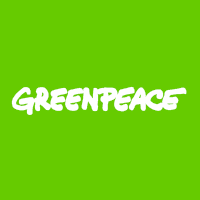Shocking Antarctic Plastic Pollution Uncovered by Greenpeace
A Greenpeace expedition to Antarctica has revealed shocking data - that plastic pollution and chemicals are now present in one of the remotest parts of the planet.
Water and snow samples gathered during a Greenpeace trip to the Southern Ocean have revealed the presence of microplastics and persistent chemicals in the majority of samples tested.
Greenpeace New Zealand oceans campaigner, Emily Hunter, says it’s painful to realise that plastic and chemical pollution has now made its way to the pristine wilderness of Antarctica.
"From plastic pollution and climate change to industrial krill fishing, the expedition to Antarctica showed us that humanity’s footprint is pervasive and devastating," she says.
"In Aotearoa, we have a special affinity to our frigid blue backyard of the Antarctic oceans. We are the closest country to the Southern Ocean, and we hold a key responsibility in protecting it against these threats."
Greenpeace is calling on the New Zealand Government to launch a plastic pollution strategy that starts with a nationwide ban on single-use plastic bags, but that includes other avoidable plastics like straws and coffee stirrers, and ensures better collection methods with a container deposit scheme for drink bottles.
This would follow similar commitments made by several international countries in the the last few weeks that have launched new legislation or draft laws in tackling single-use plastic pollution, including the UK, EU, Taiwan and India.
Greenpeace is also asking the Government to support an EU proposal for the largest Antarctic Ocean Sanctuary at 1.8 million sq km. The proposal will be discussed at a forthcoming Antarctic Ocean Commission (CCAMLR) meeting this October, of which New Zealand is a deciding member.
Hunter says the latest plastic discovery in Antarctica means the pollutant has been found in all corners of the world’s oceans, from the Antarctic to the Arctic, and at the deepest point of the ocean - the Mariana Trench.
"Given the urgency and scale of the problem, there’s an opportunity for New Zealand to become a world leader for our oceans. We need to defend the Antarctic by supporting the call for the world’s largest ocean sanctuary, and by having a strategic vision to end the flow of single-use plastic on land," she says.
"The reality of how bad our plastic pollution problem has become is both painful and shocking. Morally we can’t sit back and do nothing - New Zealand must act."
Greenpeace International conducted the scientific research during a three-month expedition earlier this year as part of a campaign calling for an Antarctic sanctuary. Laboratory analysis of the research found microplastics in almost all of the water samples tested. See the full Greenpeace International report here:
https://www.greenpeace.org/new-zealand/publication/plastic-pollution-reaches-the-antarctic/
ENDS
For
photo and video of the plastic and chemical research work
during Greenpeace’s Antarctic expedition, see: https://media.greenpeace.org/collection/27MZIFJXB12XR
Notes
For the full technical report on the sampling and analysis, see:
https://www.greenpeace.org/new-zealand/publication/plastic-pollution-reaches-the-antarctic/
Microplastics are defined as small pieces of plastic less than 5mm in diameter. Primary microplastics, like plastic microbeads, are directly manufactured. Secondary microplastics result from larger plastic items, like bottles or bags, breaking down over time. Microplastic fibres can also come from items of clothing and textiles.
Fishing gear waste:
The research also found plastic waste from the fishing industry in the Antarctic, including buoys, nets and tarpaulins drifted in between icebergs. Greenpeace says this evidence makes it clear how important it is to put this area off-limits to human activity if we’re going to protect the Antarctic’s incredible wildlife.
Background on the Greenpeace Antarctic campaign:
Greenpeace was conducting scientific research, including landmark submarine dives to little-known Antarctic seabed ecosystems, as part of a campaign to create an Antarctic Ocean Sanctuary. The water samples were gathered during a three-month expedition to the Antarctic from January to March 2018. There are relatively few data for microplastics in Antarctic waters, and this analysis provides valuable new information on the presence and status of such contamination in the region.



 Gordon Campbell: On The Public Sector Carnage, And Misogyny As Terrorism
Gordon Campbell: On The Public Sector Carnage, And Misogyny As Terrorism National Maori Authority: Maori Authority Warns Government On Fast Track Legislation
National Maori Authority: Maori Authority Warns Government On Fast Track Legislation NZ Government: Comprehensive Partnership The Goal For NZ And The Philippines
NZ Government: Comprehensive Partnership The Goal For NZ And The Philippines DoC: Canterbury Spotted Skink In Serious Trouble
DoC: Canterbury Spotted Skink In Serious Trouble Te Pāti Māori: Oranga Tamariki Cuts Commit Tamariki To State Abuse
Te Pāti Māori: Oranga Tamariki Cuts Commit Tamariki To State Abuse NZCTU: Inflation Data Shows Need For A Plan On Climate And Population
NZCTU: Inflation Data Shows Need For A Plan On Climate And Population Statistics New Zealand: Annual Inflation At 4.0 Percent
Statistics New Zealand: Annual Inflation At 4.0 Percent


